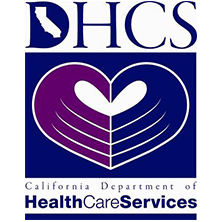IS THERE A CONNECTION
Anger and Addiction
Anger is usually a response to an anticipated threat to oneself or to others. Also, anger and the aggression that can follow is often a response to frustration. Relationship problems, finances, and poor communication skills are common issues that can trigger frustration, and thus, anger. Anger can be a productive response at times, but when anger is frequent or to the extreme, it could signal the presence of an anger disorder. Anger is a co-occurring condition treated during treatment at a rehab facility.
How is Substance Abuse Similar to Anger?
The ways that substance abuse and expressing anger affect the brain are very similar. Drugs or alcohol trigger rushes in the brain, just as angry outbursts do. In both cases, neurotransmitters are released, causing an onrush of high energy that may last for several minutes. Like any type of addiction, anger can cause a discharge of adrenaline and nor-adrenaline. The brain feels pleasure when the adrenaline is pumping and gets reinforced each time similar behaviors occur. In some situations, angry feelings create a heightened sense of aliveness, resulting in continued angry outbursts.

What are Anger Disorders?
An anger disorder is characterized by:
• A pathological response to stress
• Violent or self-destructive behaviors
• Chronically suppressed anger or rage
Anger disorders are often caused by the mismanagement of anger. This leads to normal anger growing in secret over time, causing bitterness, resentment, hatred, and damaging rage. Anger disorders can also be caused or worsened by neurological impairment and substance abuse, which can impact a person’s ability to resist angry, aggressive, or violent impulses.
ANGER DISORDERS INCLUDE:
Oppositional defiant disorder
Bipolar disorder
Antisocial personality disorder
Intermittent explosive disorder
Oppositional Defiant Disorder (ODD)
Oppositional Defiant Disorder (ODD) is a disorder characterized by repeated angry or irritable moods, arguing, and defiant behavior that happens for at least six months. In addition, these behaviors have a negative impact socially, at school, on the job, or in other important areas of daily life, causing distress in the individual or in the people surrounding the person.
People with ODD would have at least four of the following signs:(1)
- Frequent loss of temper
- Frequent anger and resentfulness
- A total disregard of rules
- Inability to take responsibility for mistakes and misconduct
- The anger episodes happen outside any psychosis, substance use, bipolar, or depression disorder
- Exhibition of annoyance
- An attitude of distrust of and defiance with authority figures
- Purposeful annoyance of other persons
- Behavior in a spiteful or vindictive manner at least twice in the past year
Antisocial Personal Disorder (ASPD)
Antisocial personality disorder (ASPD) is apparent when the patient exhibits a consistent disregard for other people’s rights and fails to show empathy toward other people. ASPD sufferers have no qualms in skirting or breaking the law to satisfy a need or want.
ASPD typically starts in childhood or in the teen years and lasts into adulthood. Antisocial personality disorder is often called sociopathy or psychopathy, but neither term is used in the criteria for diagnosis.
People with ASPD display the following signs:
- A lack of empathy
- Cynical comments or behavior
- An inflated and arrogant self-image (e.g., the attitude that certain work is beneath him or her or lacks real concerns about one’s own current problems or the future)
- Extremely self-assured or cocky
- Callousness
- Contempt for the rights, feelings and distresses of other
- Excessively opinionated
- Can “turn on” superficial charm
- Irresponsibility in sexual relationships
Symptoms of ASPD
Antisocial personality disorder cannot be diagnosed in people under the age of 18, as children are still changing and developing as they grow. Each year, the rate of this disorder is between 0.2 and 3.3% in Americans and seen 70% more often in adult males than adult females. Generally, there tends to be a reduction of symptoms by the age of 40 to 50 years old.
Antisocial personality disorder is present when an individual displays a pattern of antisocial behavior and has most of these symptoms:
- Repeatedly displays unlawful behaviors that are grounds for arrest
- Constantly lying, using aliases or conning people out of money or for pleasure
- Impulsiveness
- Fails to plan ahead
- Irritability
- Aggressiveness
- Reckless behavior towards oneself or others
- Consistently irresponsible (disregard for family, work or financial responsibilities)
- Indifferent to or rationalizes having stolen, mistreated or hurt someone else
- As a child, displayed a conduct disorder
Intermittent Explosive Disorder (IED)
Intermittent explosive disorder (IED) is a mental disorder that starts for many in their teen years and is characterized by violence towards others and their possessions, causing bodily harm and damage to property.
Research shows that about 16 million people experience IED at some point in their lives.5
A diagnosis of IED is made when:
- Three episodes of impulsive aggressiveness, extremely excessive responses to the stress that preceded the event, occur.
- In each of these three episodes, the sudden loss of control, destruction of items, and/or violence towards a person are prevalent.
Occurrences of violent episodes in the space of only one year denote a persistent and more serious type of IED, especially if the act of violence is directed at both people and property. This type of IED is diagnosed in about 4% of adults in any given year, which is approximately six to 8.5 million people in the United States.
The average IED patient displays about 43 attacks over a lifespan and exhibits impaired function.
Anger and the Brain
An area of the brain called the amygdala alerts us to danger and turns on the fight or flight response, triggering anger, and motivating us into action.
Another area of the brain, called the prefrontal cortex, controls judgment and reasoning and promotes logical thinking before an action takes place.
Men have larger parts of their brains (amygdala regions) devoted to emotional responses and smaller areas (prefrontal cortex regions) for logic, compared with women.
From a hunter-gatherer perspective, men are hard-wired to search out and rapidly respond to dangers.
DIFFERENT WAYS ANGER WORKS IN THE BRAIN
In a dangerous situation, the amygdala sends out a distress signal to the entire brain, causing a group of physical responses to occur, such as rising blood pressure, rapid heart rate, muscle tension and a release of adrenaline, which may induce anger before the prefrontal cortex can process what is happening.
When the amygdala judges if a situation is hazardous, it compares the situation with past emotion-filled memories. If any important elements are somewhat similar (such as sounds or facial expressions), the amygdala can instantly let loose warnings and an emotional explosion.(6)
Weaker connections within the brain may instigate anger disorders. Research suggests that less connective brain tissue can produce errors in processing social situations, and the impaired judgment can lead to explosive and angry outbursts.
Is Anger an Addiction?
Addiction is defined as a chronic, primary disease of the brain. The areas of the brain controlled by addiction process reward, motivation, and memory. When these processes are disrupted, it shows up biologically, mentally, socially and spiritually, causing a need to pursue reward and/or relief by using substances and other behaviors.
The subsequent actions evolve into addiction- not being able to abstain, difficulties with controlling behavior, cravings, and a failure to recognize how significant the problems are from one’s behaviors. Addiction has two main categories:
Substance addiction involves the abuse of alcohol and/or drugs.
Process addiction involve behaviors such as shopping, gambling, hoarding, eating disorders, working too much, co-dependence, and the inappropriate display of the normal human emotion of anger.
How Is Anger and Addiction Treated?
Anger disorders typically accompany another mental health disorder. Conditions coexisting are called co-occurring disorders or dual diagnosis. Ninety percent of those afflicted with anti-social personality disorder (ASPD) have another disorder, such as anxiety disorder, depressive disorder, or substance use disorder.
Treatment needs to address all the coexisting disorders in order for it to be effective and individualized to each patient’s needs. The best approach is to use a combination of different therapies and adjust the approach as needed. These different therapies can include:
- Psychotherapy
- Inpatient treatment, especially for those with co-occurring substance use disorders
- Medications
- Self-help
Therapy for Anger Disorders
Cognitive-behavioral therapy (CBT)
Cognitive-behavioral therapy (CBT) can help people with ODD, BPD, IED and milder forms of ASPD, who are aware of their behavior and who want to improve. In CBT sessions, the therapist and client look at distortions in thinking and beliefs that lead to behaviors that harm relationships and stop the person from reaching goals.
Mentalization-based therapy (MBT)
Mentalization-based therapy (MBT) is effective in treating antisocial personality disorder. (8) In MBT sessions, the therapist works with the client to improve the ability to recognize and understand the mental states of oneself and others. The process examines the beliefs, feelings, thoughts, and desires of the client.
Family therapy (FT)
Family therapy (FT) can help educate loved ones, and further understanding of anger and co-occurring disorders. Families sometimes misunderstand and experience confusion about a loved one’s antisocial behavior. They find it hard to understand that anger or antisocial behavior is a disorder. Family therapy can also assist clients with anger disorders to realize the impact of their behavior. FT sessions also work on improving communication skills.
Medications
Medications can help with certain aspects of anger disorders and the moods associated with them. Mood stabilizers, such as lithium, may be helpful. Other medications, such as an antipsychotic or an antidepressant, may be effective for some people.
Inpatient Treatment (IP)
If you or a loved one have an anger problem or disorder, while professional treatment can help, it’s also important to control anger day-to-day. Here are some useful anger management tips:
Behavioral Tips
Once calm, express your anger. Once you have a clear head, express your frustration assertively but not in a confrontational manner. Calmly explain your needs and concerns directly, without trying to hurt or control others.
Don’t focus on what is making you angry; focus on finding a solution.
Keep in mind that anger won’t fix the problem and may make it worse.
Physical Tips
Use “I” (rather than “you”) statements to describe the problem. This avoids criticizing the other person and shows respect. For example, say, “I’m upset that you left your dirty clothes on the floor,” rather than “You never pick up after yourself.” Learn to forgive and stop holding grudges. If you don’t forgive someone, it blocks out positive feelings, and the sense of bitterness or injustice can become overwhelming with time. Lighten a situation with humor. It will relieve tension.
Resources
- https://www.ncbi.nlm.nih.gov/books/NBK519712/table/ch3.t14/
- https://www.nimh.nih.gov/health/statistics/bipolar-disorder.shtml
- https://psychcentral.com/bipolar/
- https://psychcentral.com/disorders/antisocial-personality-disorder/symptoms/
- https://www.nih.gov/news-events/news-releases/intermittent-explosive-disorder-affects-16-million-americans
- https://blogs.psychcentral.com/anger/2016/06/anger-and-the-brain/
- https://psychcentral.com/news/2016/07/08/weak-brain-connections-linked-to-anger-disorders/106586.html
- https://psychcentral.com/disorders/antisocial-personality-disorder/treatment/
SAFE HARBOR TREATMENT CENTER
SEEK PROFESSIONAL HELP
Know when it’s time for you to reach out for help. If your anger seems out of control, causes you to act out, and later regret it, or your anger hurts people around you, it’s time to seek professional help. If you, or someone you live is struggling with depression, help is available and recovery is possible. Safe Harbor can help with recovery from substance use disorders, depression and other co-occurring diagnosis. Call for help today.




